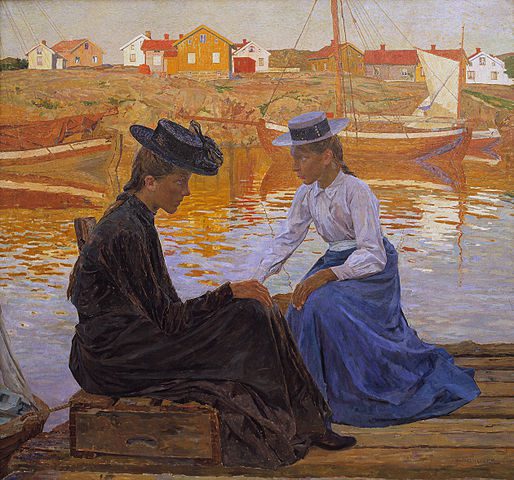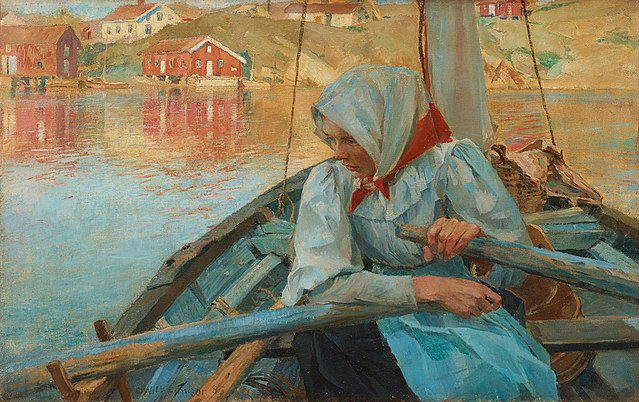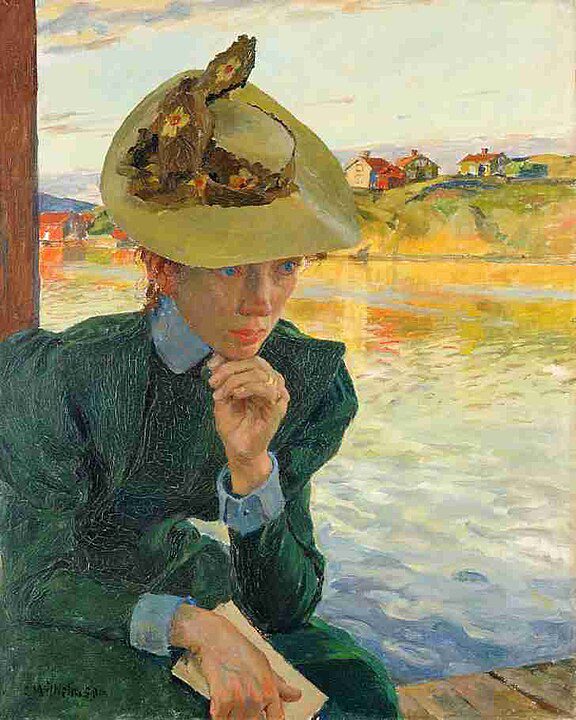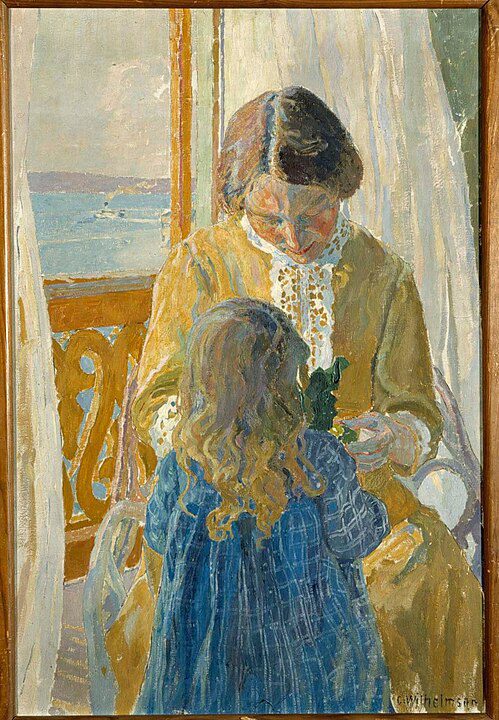
Carl Wilhelm Wilhelmson (1866-1928) was a distinguished Swedish painter and educator, whose artistic journey and contributions to the Swedish art scene remain influential. Born on May 4, 1866, in Fiskebäckskil on the west coast of Sweden, Wilhelmson’s early life was deeply rooted in the traditions and natural beauty of his hometown, elements that would profoundly influence his art throughout his career.
Wilhelmson’s journey into the world of art began at the Royal Swedish Academy of Arts in Stockholm, where he studied from 1887 to 1892. His time at the academy was foundational, equipping him with the technical skills and artistic sensibilities that would define his early work. Wilhelmson was particularly drawn to the naturalistic and realistic styles of painting, which resonated with his own inclinations towards capturing the essence of his immediate environment.

After completing his studies, Wilhelmson’s quest for artistic growth led him to Paris, the then epicenter of the art world. During his time in Paris, he was exposed to a myriad of artistic styles and movements, including Impressionism and Post-Impressionism, which had a significant impact on his work. The dynamism and color of these movements enriched Wilhelmson’s palette and broadened his artistic horizons. However, despite these influences, he remained true to his roots, often depicting scenes from the Swedish landscape and everyday life.
Back to Sweden
Returning to Sweden in the late 1890s, Wilhelmson embarked on a career that would see him become one of the country’s most beloved artists. He settled in Gothenburg, where he became a central figure in the local art scene. His paintings from this period are characterized by a deep empathy for his subjects, often fishermen and farmers, and a profound connection to the land and sea. Wilhelmson’s ability to capture the harsh realities and simple beauties of rural life, with a particular focus on the effects of light and atmosphere, garnered him widespread acclaim.
In 1908, Wilhelmson took a significant step in his career by joining the faculty of the Valand School of Fine Arts in Gothenburg, where he served as a professor until 1920. His tenure at Valand was marked by a commitment to nurturing the next generation of Swedish artists. Wilhelmson was a beloved teacher, known for his encouraging and innovative teaching methods. He emphasized the importance of direct observation and plein air painting, urging his students to engage deeply with their subjects.
Wilhelmson’s contributions to Swedish art were not limited to his paintings and teaching. He was also an active member of the art community, participating in numerous exhibitions and playing a role in art organizations. His work was exhibited widely, both in Sweden and internationally, and he received several awards and honors in recognition of his artistic achievements.

Throughout his career, Wilhelmson continued to explore and evolve his artistic style. While he remained loyal to the representational and naturalistic traditions, his later works became more expressive and bold in their use of color and form. This evolution reflects Wilhelmson’s constant search for new ways to express his vision and his response to the changing artistic landscapes of his time.
Swedish Soul
Carl Wilhelm Wilhelmson’s legacy is that of a painter deeply connected to his roots, yet open to the influences and innovations of the broader art world. His paintings, characterized by their luminosity, sensitivity, and depth, continue to captivate audiences, offering a window into the Swedish soul and landscape. As a teacher, he left an indelible mark on the Swedish art scene, shaping a generation of artists who would carry forward his commitment to observation, nature, and the emotional power of art.
Wilhelmson’s influence extended beyond his lifetime, with his works held in major collections and museums across Sweden and internationally. His home in Fiskebäckskil is a testament to his life and art, serving as a museum and cultural site that attracts visitors interested in his work and the rich artistic heritage of the region.

In summary, Carl Wilhelm Wilhelmson’s biography is a narrative of artistic dedication, innovation, and influence. From the shores of Fiskebäckskil to the halls of the Valand School of Fine Arts, his journey reflects the broader currents of Swedish and European art at the turn of the century. His commitment to capturing the essence of the Swedish landscape and people, combined with his role as an educator and community member, cements his place as a pivotal figure in the history of Swedish art.




